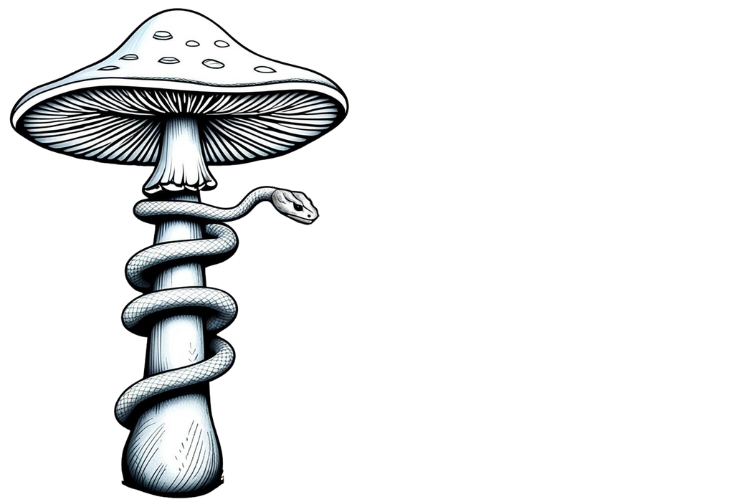DMT Release through Breathwork
Jan 17, 2024
Have you ever wondered about the fascinating connection between breath and the mystical experiences some people claim to have? Let’s delve into the intriguing world of DMT release through breathwork in a way that’s easy to grasp.
What is DMT?
DMT, or Dimethyltryptamine, is a potent psychedelic compound discovered in certain plants and animals, including the Psychotria viridis plant used in Ayahuasca. Termed the “spirit molecule,” DMT is known for inducing intense spiritual experiences and vivid hallucinations.
Used in ceremonies like Ayahuasca, DMT has a rich cultural history, especially among indigenous Amazonian tribes. It acts on serotonin receptors, particularly the 5-HT2A receptor, leading to rapid and intense alterations in perception, mood, and cognition.
The Breathwork Connection:
Certain breathing techniques have been intriguingly linked to the potential release of DMT within the human body, offering a fascinating intersection between breath and altered states of consciousness. Breathwork entails employing specific breathing patterns designed to induce profound changes in your mental and emotional state.
The Science Behind It:
While the exact mechanics are not completely understood, some theories suggest that controlled breathing might influence oxygen and carbon dioxide levels, impacting brain chemistry. This alteration in brain chemistry is thought to be associated with the activation or release of DMT or DMT-like substances. Scientists discovered that the levels of DMT differ depending on where you examine the brain. For example, the highest concentrations of DMT were found in the amygdala, whereas the lowest levels were detected in the cerebellum. These findings suggest that DMT plays a role in regulating emotions and behaviour.
The Pineal Gland’s Role:
Speculation also centres around the pineal gland, often called the “third eye.” Some theories propose that the pineal gland, a small but enigmatic structure in the brain, may be linked to the production and release of DMT during certain breathwork practices.

Studies in Breathwork and DMT:
Emerging research has explored the relationship between breathwork and altered states of consciousness. A 2018 study in the journal “Psychopharmacology” delved into the effects of controlled breathing, shedding light on the potential connections between breathwork and DMT release.
How Does It Work?
When you engage in deep, rhythmic breathing, it affects your brain chemistry. Some experts believe that increased oxygen levels and altered carbon dioxide levels during breathwork may trigger the release of DMT or DMT-like substances in the brain.
Scientific Evidence:
Emerging research has delved into the fascinating relationship between breathwork and altered states of consciousness. A notable 2018 study published in the esteemed journal “Psychopharmacology” meticulously examined the effects of controlled breathing on participants.
This study observed that specific breathing patterns altered participants’ subjective experiences, including heightened sensory perceptions and an increased sense of connectedness when practised deliberately. While the study did not directly measure DMT levels, it provided valuable insights into the potential connections between controlled breathing techniques and the modulation of consciousness.
Researchers in the field emphasize the need for further investigation to elucidate the precise mechanisms at play and to establish a more concrete link between breathwork and DMT release. As this study area unfolds, it sparks curiosity and invites us to explore the intricate interplay between breath, consciousness, and the untapped potentials within our minds.
Benefits:
In addition to enhanced creativity and reduced stress, advocates of breathwork often suggest potential benefits such as improved focus, better emotional regulation, and enhanced overall well-being. Some even claim that regular practice may improve respiratory function and cardiovascular health.
However, it is crucial to acknowledge that the scientific evidence reinforcing these claims is still evolving. While some studies suggest positive outcomes, the field is complex, and individual responses can vary widely. As with any holistic practice, it’s advisable to consult with healthcare professionals and integrate breathwork into a broader approach to well-being.
In conclusion, the intriguing link between breathwork and DMT release prompts the exploration of consciousness and encourages a broader discussion on the crossroads of ancient practices and modern scientific understanding. Ongoing research strives to unravel how breathwork impacts the mind and body. Approaching these topics with a balance of curiosity and respect for scientific inquiry is crucial. As we continue to peel back the layers of our cognition, breathwork remains an exciting and dynamic study area, providing a unique lens to comprehend the depth of the human experience.
Stay connected with news and updates!
Join our community emails to receive the latest news and updates from our team.
Don't worry, your information will not be shared.
We hate SPAM. We will never sell your information, for any reason.

